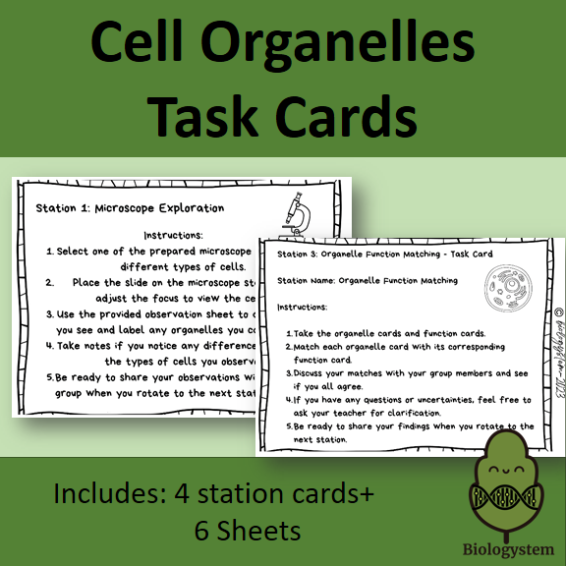Introduction:
“Welcome to the world of hands-on science education, where complex cell biology concepts come to life through Station Activities for Cell Biology! Teaching cell biology can be a challenging task, especially when diving into intricate cellular structures and functions. But fear not, for I have a solution to make learning not only informative but also incredibly fun.”
Let me today introduce you to four captivating station activities designed to transform your classroom into a dynamic laboratory of exploration. These activities are more than just educational tools; they’re the keys to unlocking the wonders of cell biology for your students.
Station 1: Microscope Exploration
Imagine your students huddled around microscopes, peering into a world invisible to the naked eye. The Microscope Exploration station is your gateway to the mesmerizing realm of cells. It’s not just about observing; it’s about discovering a new perspective on life’s building blocks.

How It Works:
- Select one of the prepared microscope slides with different types of cells.
- Place the slide on the microscope stage and adjust the focus to view the cells.
- Use the provided observation sheet to draw what you see and label any organelles you can identify.
- Take notes if you notice any differences between the types of cells you observe.
- Be ready to share your observations with the group when you rotate to the next station.
Station 2: Cell Model Building
Enter the realm of creativity and innovation with the Cell Model Building station. Students get to choose either a plant cell or an animal cell and use an array of craft supplies to bring their cell models to life. It’s not just about molding materials; it’s about shaping ideas and understanding cellular structures.
How It Works:
- Choose either a plant cell or an animal cell to create a 3D model of.
- Utilize the provided craft supplies (clay, playdough, beads, toothpicks, etc.) to craft your cell model.
- Pay close attention to the organelles inside the cell and their locations.
- Label the organelles on your model using toothpick flags or small paper labels.
- Be prepared to explain your cell model to the group when you rotate to the next station.
Station 3: Organelle Function Matching
The Organelle Function Matching station takes students on a journey to comprehend the core functions of cell organelles. It’s more than just matching; it’s about connecting structure to function, a fundamental aspect of biology.
How It Works:
- Take the organelle cards and function cards.
- Match each organelle card with its corresponding function card.
- Discuss your matches with your group members and ensure everyone agrees.
- If you have any questions or uncertainties, don’t hesitate to ask your teacher for clarification.
- Be ready to share your findings when you rotate to the next station.
Station 4: Osmosis Experiment
Ever witnessed osmosis unfold before your eyes? The Osmosis Experiment station brings this cellular phenomenon to life. It’s a hands-on exploration of water’s impact on cells, and it’s more than just a science experiment—it’s a scientific adventure.
How It Works:
- Observe the three containers with different solutions: water, salt water, and sugar water.
- Place one piece of raw potato into each container and label them.
- Predict how you think the potato pieces will change over time due to osmosis.
- Observe and record the changes in the potato pieces at 30-minute intervals on the provided recording sheet.
- Discuss your observations with your group when you rotate to the next station.
Conclusion:
In conclusion, these station activities aren’t just about teaching cell biology; they’re about igniting a lifelong passion for science. They foster critical thinking, engage students in active learning, and align seamlessly with NGSS standards.
Ready for More?
Dive into the complete resource! Visit my TpT store and unlock all four station activities, complete with detailed instructions and task cards. Transform your classroom into a hub of scientific exploration!
Let’s embark on this journey together, enhancing students’ understanding of cell biology through interactive and engaging activities. Your classroom is about to become a hotspot of scientific discovery!
💬 Share Your Stories: Have you used station activities to teach science? Share your thoughts and experiences in the comments below.
👉 Stay Connected: Don’t miss out on more science teaching resources and tips! Follow my blog for exciting updates and educational adventures, and follow me on Instagram and Pinterest.
🌐 Spread the Word: Loved this blog post? Share it with your fellow educators on social media. Let’s make science education a thrilling adventure for all!
